Dale Brevik, whose work is featured in this month’s Reader Built Boat feature, built a beautiful model of a classic mahogany runabout and was inspired by it to build the real thing. My approach to models has usually been the other way around; they follow the boats that I’ve built. Whether it kindles the flames of ambition or sustains the embers of memories, a model can augment the rewards of building and using a boat.
Building a boat inevitably creates a connection with it. The complexity of the work requires an investment of time, thought, and energy— it requires giving one’s self over to the boat. Then, when the boat is launched and put to use, the direction of giving is largely reversed. The boat sustains us in an environment that we can’t otherwise survive in, takes us places often inaccessible by other means, and may even cradle us while we sleep. Time aboard is time we take for ourselves, extraordinary departures from the immemorable experience of ordinary days.
I don’t have as much time for cruising as I did when I began building boats, but I often sit in the three boats with cabins, especially when it’s raining, while they idle on their trailers in the driveway and back yard. With tarps covering the windows, it’s easy for me to imagine being at anchor somewhere, safe and content. Models can evoke the same feelings and have the advantage of being small enough to keep in the house where I regularly see them while passing through a room. In those brief glimpses, they can bring back not only the memories of the cruises I’ve made in the boats they represent but also the sense of freedom and the feeling that there is room to breathe. I sold the first boat I made for cruising, the dory skiff I rowed and sailed north for a month along the Inside Passage. I also sold the Hooper Bay kayak, the only kayak I’d built that I could sleep in. I may sell other boats I’ve built for myself, but I won’t part with the models.
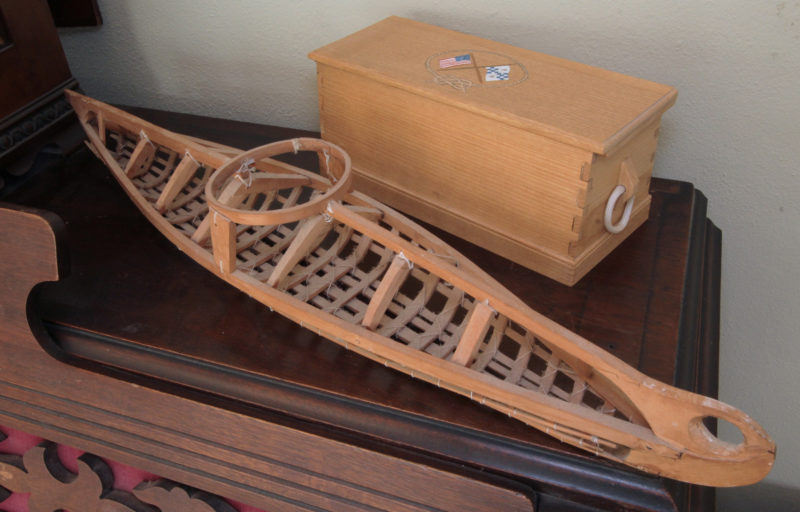
In 1979, I built a voluminous Hooper Bay style of kayak from western Alaska. It was about 18″ deep and 30″ wide amidship, large enough for me to slide into and relax during a light onshore breeze. The canvas skin rotted after about 5 years but I kept the frame until last year, when I sold it. I made this model in the ’80s while I was manning a booth at a 9-day boat show in Seattle, using a pocket knife for most of the carving and a popcorn popper to boil water for ending the ribs and coaming. The model keeps alive the memory of lying in the hull, watching the play of water and sunlight on the skin and breathing in the redolent mix of red and yellow cedar, linseed oil, and cotton canvas.
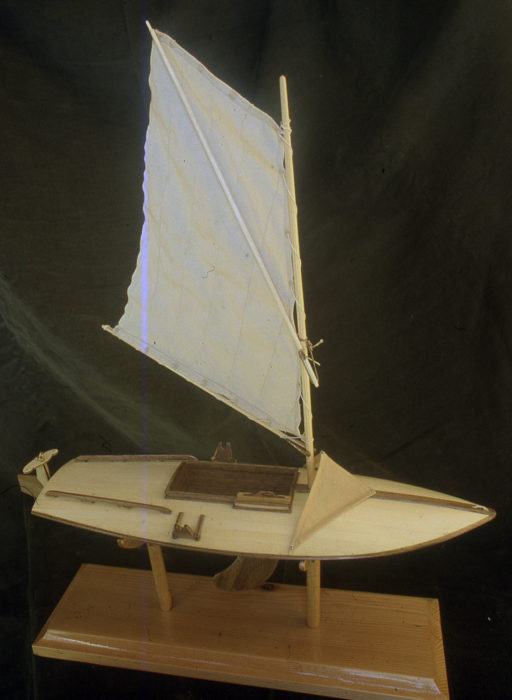
I didn’t build this sneakbox model for myself but for a dear friend, the late Walter Fullam, a man who changed the course of my life. An article he had written about American adventurer Nathaniel H. Bishop inspired me to retrace both of Bishop’s 19th century small-boat voyages. It was a pursuit that lasted 4 years and eventually led to my 30-plus-year career as an editor. I have only photographs of the model, but they remind me not only of the 2-1/2 months I spent cruising my sneakbox from Pittsburgh to Florida, but also of the decades of friendship with Walter and his wife Dorothy.
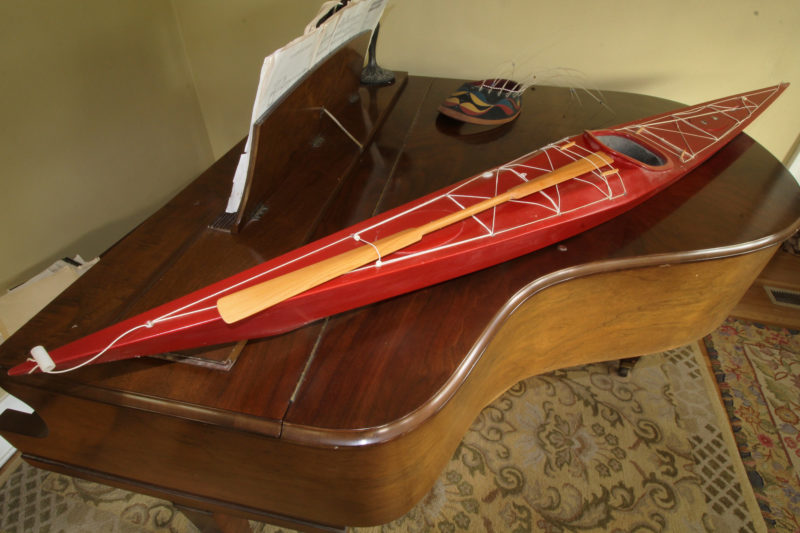
I paddled my plywood interpretation of the Greenland kayak for many years. I had equipped the full-sized kayak with a small batwing sail and often sailed in storms, reaching speeds over 10 knots. Racing ahead of waves was both exciting and restorative. At high speeds, bracing with the paddle was rock solid, so I didn’t worry about capsizing; I could trust in my kayak, my paddle, and my reflexes and let my mind go blank. When the kayak surfed wave after wave without letting up, I often found myself laughing, completely at ease.
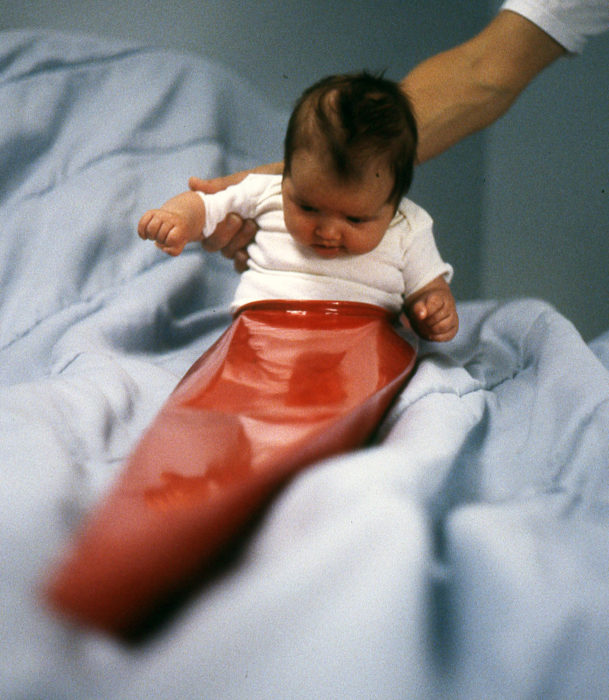
My Greenland kayak model also recalls my daughter’s infancy. While I may look at models of my boats and imagine being aboard them, Alison is the only one who ever actually occupied one of them.
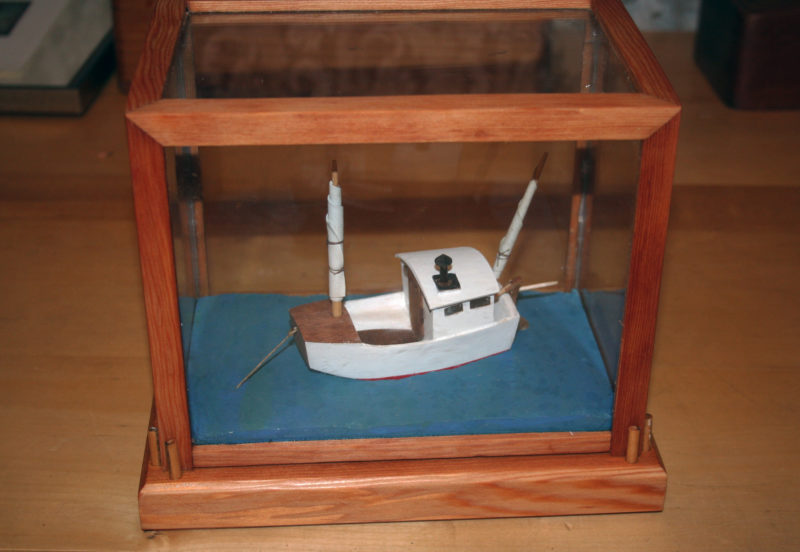
Several years ago, Rachel and I spent five summer days aboard HESPERIA while anchored in a small cove in the San Juan Islands. My seamanship was, at times, a comedy of errors, and as a reminder I made a cartoon version of the boat in a glass case. I have built the hull of a larger accurate model but have yet to outfit it with the foredeck, sailing rig, and cabin.
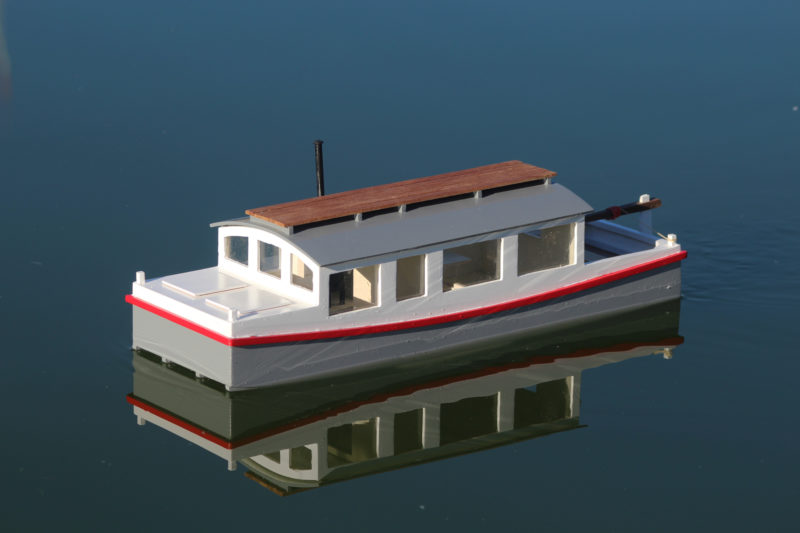
BONZO, an Escargot canal boat that my son Nate, a friend of his, and I built in 2009, has become an important family fixture. Alison, Nate, and I have taken the boat cruising and have had friends and other family members join us aboard for birthday parties, Father’s Days, Fourth of July fireworks, fish-and-chip lunches and pizza dinners, and entertaining out-of-town guests. Years ago, when I was still doing my own taxes, I’d take BONZO out on the lake to make the paper shuffling and number crunching less onerous.

Because BONZO’s cabin is where we most often gather, I made the model’s roof removable so the furnishings wouldn’t be hidden.
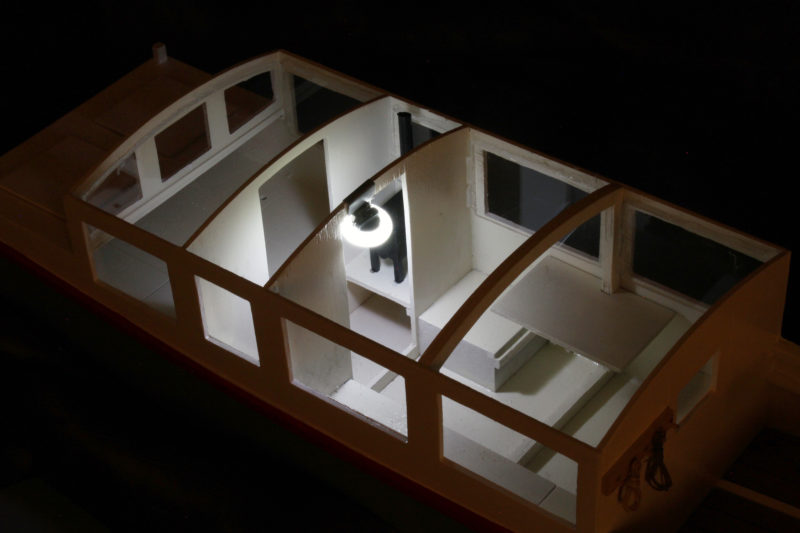
To better rekindle memories of nights aboard BONZO, the model has its own lighting.


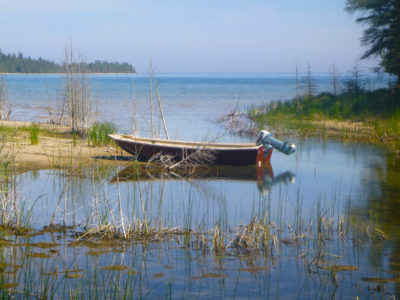
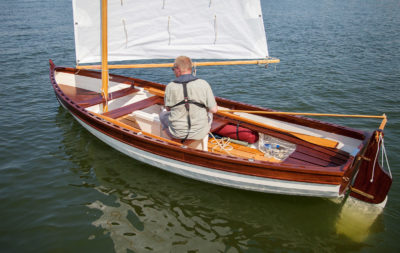
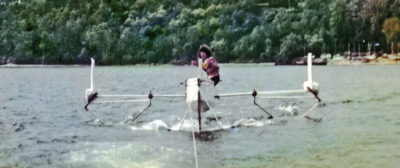

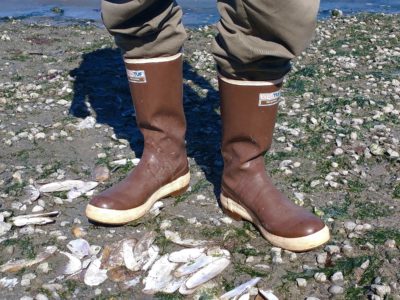
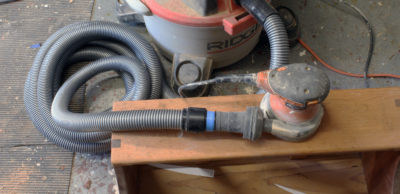
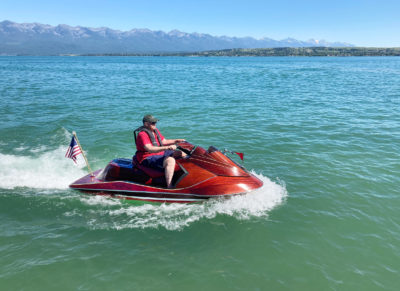
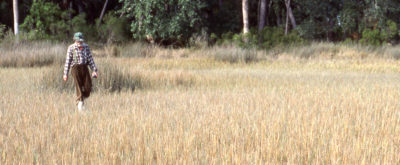
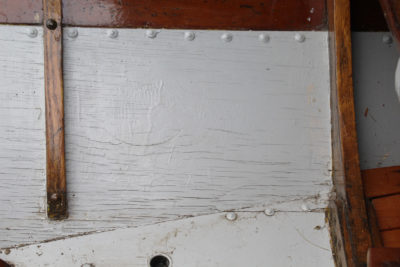
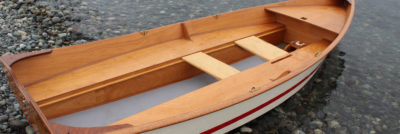
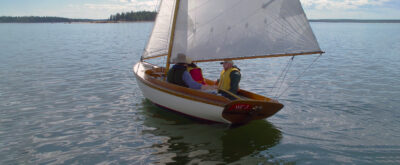
I got nudged to write to you this morning, reading your article on models you have built.

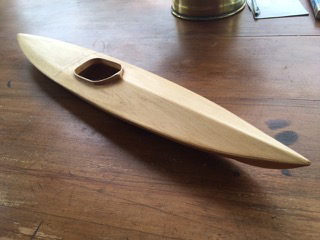
There was the model of the Greenland kayak that captivated me back in 1994 ! As you can see, I still have the well thumbed copy of the fall edition of the Sea Kayaker magazine with your article about how to build that kayak.
I went on to build three Tursiop kayaks, two I still have here in the Bay of Islands in New Zealand for camping and fishing, and the other is sleeping in a loft in Cornwall, UK. (Ummm…I think it’s still there!)
So,if we are talking models, here is the one I built before tackling the full-sized version of the Tursiop.
Fair winds.
Peter Jones
P.S. That photo of your daughter—she could paddle-brace even at that young age. A natural!
Back to back home runs…two very nice editorials.
Along with building full-sized prototypes, I am a lifelong model builder. I got involved with model cars and competitions during the ’60s – eventually won many – took some time to develop my skills, including an eye and a feel for scaling.
I did it professionally in all scales in all media at McDonell Douglas both functional and static display. One area I really enjoyed was building, modifying, and test full-scale crew stations mockups.
Along with these experiences, I build display models for both Diaship, Fryco, and other marine designers. With the advent of well-developed digital 3D from AutoDesk and others that sort of disappeared for independents like me. However, I have to applaud some designers holding physical model building as an important part of the design cycle…particularly for the client.